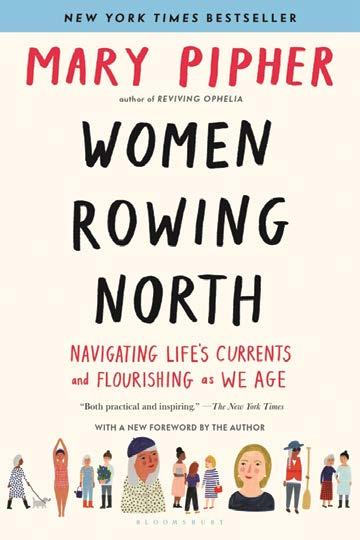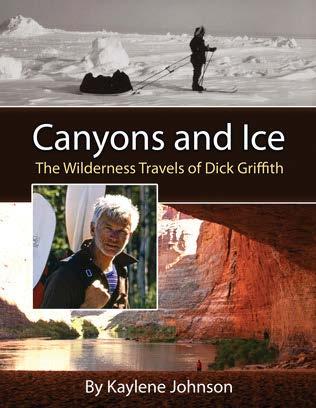
9 minute read
Trivia Night Desert Dust Over Danville
uizmaster Abby Karavanic created these thought provoking questions to test Q participants at the September Trivia Night at 2 Witches Winery & Brewery, 209 Trade Street, Danville. Teams of three or four people wrote answers to the oral questions. At the end of four rounds, the number of correct answers from each team was tallied and a winner announced. The honor system was used. The prize was bragging rights for a lifetime! No registration is necessary for the October 5 and October 19 competitions starting at 7:00 p.m. There is no charge. Just show up or Zoom in on Facebook. The only requirement is that everyone have fun.
What’s It Called? Animal Groups
Advertisement
Ex: A group of cattle is called a drove. 1. Monkeys 2. Lions 3. Crows 4. Sheep 5. Goats 6. Owls 7. Fish 8. Ants 9. Bees 10.Kittens
ICYMI (In Case You Missed It)
1. A few weeks ago week,
McDonald’s UK announced they will be testing a new system for what disposable vessel that will be reusable and returnable? 2. What windy day kid’s toy served as the inspiration for a new type of airborne wind turbine? A startup in Germany is building one that uses ten times less material at half the cost of traditional options. 3. Purdue engineers announced the development of a simple printing process that can render what material into a

keyboard, keypad, or other easy-to-use human machine? 4. Outdoor adventurist, Christian
Bagg, created the Bowhead
Reach, a three-wheeled, motorized version of what for people with physical limitations? 5. Which tech giant launched a fleet of giant balloons over remote parts of east Africa that will broadcast mobile internet to roughly 72% of that area’s population living without internet? 6. Unsurprisingly, which Southern city has a musician that is trading trumpets for guns with the city’s youth? 7. What architectural and social movement that advocates simple living led California based company, Mighty
Buildings, to begin producing 3D printed versions that can be completed in just twenty-four hours? 8. Schools in Manchester began employing what kind of machine to sterilize rooms for returning humans? 9. In June, Dr. Kathy Sullivan, the first American woman to walk in outer space, became the first woman to see the deepestknown point on the ocean floor. What is the deepest part of the ocean known as? 10.Retirees E. J. Brandt & David
Benscoter became amateur botanists for their Lost Apple
Project and discovered forgotten genetic strains of apples. How many had they rediscovered as of April 2020?
the pioneer days. that were thought to be extinct since Mariana Trench; 10.They discovered ten Rosie; 9. Challenger Deep in the autonomous self-cleaning droids—2020 7.Tiny Homes; 8. ROBOT cleaners, 5.Google Loom Project; 6.New Orleans; paper or cardboard; 4.mountain bike; 1.coffee cup; 2.kite; 3.a piece of
Answers to ICYMI
8.colony; 9.swarm; 10.kindle 5.trip or tribe; 6.parliament; 7.school; 1. barrel; 2.pride; 3.murder; 4.flock;
Answers to What’s It Called?
Desert Dust Over Danville

by Mack Williams
While searching for new ways to entertain yourself or others, remember to look up. The sky always offers a fascinating show. Former science educator, Mack Williams, writes about his experience earlier this summer.
On the day of the muchanticipated Saharan dust plume’s arrival in our area at the end of June, there were numerous weather warnings of particulates in the air of nearby localities.
I skipped my Ballou Park exercise walk, fearing that pollen plus sand-dune dust might set off a particular kind of cytokine storm! I decided to find my binoculars, most often used for the moon, stars, and planet, and use them to look more closely for tell-tale signs, or the color of a plume of stratospheric desert dust, such from its Saharan sand like the Biblical chaff being separated from its wheat.
The day was mostly cloudy, but in the cloud breaks, the sky looked a much lighter shade of blue than I expected. While gazing for traces of the Saharan dust cloud, I sometimes imagined hearing the luscious strains of the “Lawrence of Arabia” soundtrack (1962). Even with those imaginary strains of desert music, my mind still wasn’t able to morph those dust having been separated
highest clouds into riders crossing the sands. I did notice, however, that some of the highest, thinnest clouds seemed to be just as exactly wind-rippled as many of the Saharan dunes, or those of the Mohave Desert. But maybe they only seemed to be so. Perhaps it was just a mirage.

Book Clubbing
reviews by Diane Adkins
Bright Precious Thing: A Memoir
by Gail Caldwell
Women Rowing North: Navigating Life’s Currents and Flourishing as We Age
by Mary Pipher

Sometimes you will hear a person speak of having a big birthday, also known as a milestone birthday. Those are commonly understood as the ones that end in a zero and especially the ones that occur after you have reached, say, fifty. But honestly, after a certain age, they are all big birthdays because we have endured. We have had the stamina (and the good fortune) to keep going through the inevitable toll life takes on us. This month’s books were written by women who have lived through some of those milestone birthdays and their reflections are important.

In Bright Precious Thing, Caldwell reaches back to her Texas girlhood for inspiration when a precocious five-year-old, Tyler, finds her way into her life. Moving between her present situation in Cambridge, Massachusetts and the Texas years, she connects her personal dots, delineating her path to feminism. It is a deeply personal and unflinching story, and it took some courage to tell it all. Near the end, Caldwell describes her relationship with Tyler, “She is like a star that fell from the sky into my yard.” Their friendship is the best argument for making sure we include the very young in our lives as we age.
While not a memoir, Women Rowing North is still anecdotal. Mary Pipher has collected many older women’s stories, the overarching theme of which is that we can learn the skills we need to adapt to anything life puts in our path. We can choose to let go of the past, embracing the present reality and making it our own. She points out that we will, eventually, say goodbye to everything and everyone we love. Many studies have shown that we are increasingly happy as we age, that as more is taken from us, the more deeply we appreciate what is in front of us. This is key, and we have all heard similar language during this pandemic. Forced to slow down, we have learned to see the beauty in the natural world that surrounds us, to delight in the simple pleasures of life. This can be taken too far, of course; many are struggling to have enough food or shelter. Nonetheless, the keys to building a good day include what Pipher proposes: good friendship, some intellectual challenge, the appreciation of beauty, and variety in our daily experiences.
Often, older women are portrayed in a less than flattering light in our culture. These two books show how false that is. As May Sarton said, “Old age is not an illness, it is a timeless ascent. As power diminishes, we grow toward more light.” Celebrate this: we have stamina and we have endured. We have found new joys. We have, indeed, persisted.
Diane S. Adkins is a retired Director of Pittsylvania County Library System.
Reflecting Forward
Hiking Through Your Personal Wilderness by Linda Lemery
Irecently saw a listing for a PBS show about wilderness explorer Dick Griffith that I couldn’t watch, so I asked my husband Steve to record it. Not only did he do that, but he also bought me the book*. Reading about this man’s by living in this immensely
Dick Griffith grew up during the Depression. His years leading to adulthood taught him that he wanted to live his life as much as possible on his own terms. He loved exploring and pushing his limits in the wilderness. He infused that into his work and the way he lived with family and friends. A solitary man, he repeatedly trekked through the wilderness, walking or skiing hundreds of miles in remote parts of Alaska and Canada. He rafted parts of the Colorado River previously thought to be inaccessible. With companions, he hiked toward his goal of rafting in Mexico’s Urique River canyon using an Air Force map with so little detail that the travelers had to find the water on their own. He did this without the help of sponsors and not for fame or fortune, either. He used his stamina to learn.
He based his reactions to threatening situations on what he’d read about previous explorers and his own experiences--like the time he scared off a polar bear by charging at it while whipping a branch and screaming. Gone for months at a time, his family never knew when he was coming home. After Dick and wife Isabelle had children, she stopped traveling. She understood that he needed these trips like he needed air. on that understanding. It seems that this man trekked at first for an introduction to nature, but later to deepen his connections to the wilderness around him and ultimately within him. When asked in his mid-80s why he continued to take these walkabouts, he said that he didn’t know, but his compulsion would tell him when to walk again.

compelling connection to wilderness gave me the springboard to realize that while Dick Griffith’s life work was to deepen his understanding of nature and uncharted territory, we all have our “personal wildernesses” in which we’re constantly striving to learn more, to apply what we’ve learned, to find our way, to succeed, to move beyond the current problem and into solving the next one. Across our species, we are not so different. Within our personal spheres, we want to be more in touch with our worlds with their pockets of personal wilderness, whether they’re related to people, place, language, culture, connection, faith, or whatever our work may be or wherever our interests may lie. Perhaps my learning from reading this book is accelerated Their relationship depended
disruptive pandemic period with which I have to find ways to cope in my professional and personal life. Or maybe I am just searching for a way to make a leap: from what I read, to how I live, to how others live, to what it all means regarding finding my way more effectively through the next personal wilderness. Please read the book. Not only is it about stamina, it’s also about character, as is so much of life.
About the Author: When she’s not stretching her mind in so many directions that it feels like Silly Putty®, Linda Lemery llemery@ averett.edu serves as Circulation Manager at Averett University’s Mary B. Blount Library in Danville. She welcomes reader comments.









